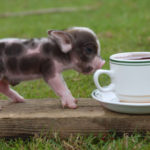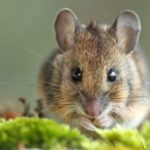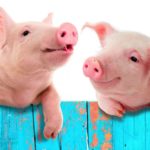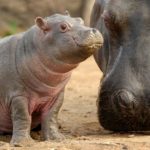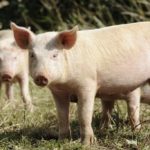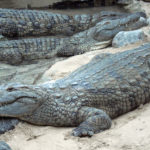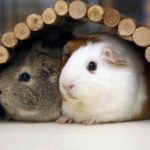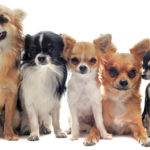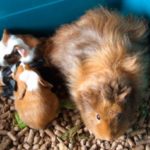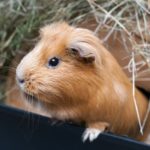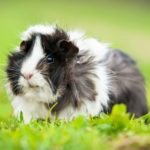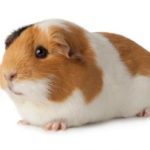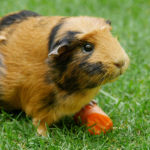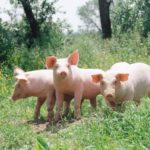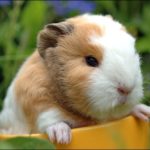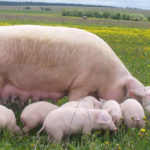Pigs
 Pigs are medium-sized animals that have a sturdy barrel-shaped body. The skin is thick, the hairline is quite rare. The length of the body varies from 50 to 190 cm, the length of the tail is 3.5-4 cm, the body weight of adults reaches 350 kg. Eyes small, located high on the skull, small ears and pointed. The skull is pointed, with a flat upper profile. One of the most characteristic features of pigs is a mobile muzzle with a cartilaginous disc at the end, where nostrils are located – a kind of “patch”. Skull with protruding occipital crest folded from the superior occipital and parietal bones.
Pigs are medium-sized animals that have a sturdy barrel-shaped body. The skin is thick, the hairline is quite rare. The length of the body varies from 50 to 190 cm, the length of the tail is 3.5-4 cm, the body weight of adults reaches 350 kg. Eyes small, located high on the skull, small ears and pointed. The skull is pointed, with a flat upper profile. One of the most characteristic features of pigs is a mobile muzzle with a cartilaginous disc at the end, where nostrils are located – a kind of “patch”. Skull with protruding occipital crest folded from the superior occipital and parietal bones.
On the legs there is no first finger, the other four are provided with hoofs. When moving pigs rely only on the third and fourth fingers, while the second and fifth are located slightly higher in the limb.
The tooth formula differs in different genera. The upper incisors decrease in size at the sides. The lower incisors are long and narrow, grow at a slight angle so that they become almost horizontal. Upper canines constantly increase in size, turning into large curved tusks. Friction between the upper and lower canines provides sharp edges. Molars with conical or rounded hillocks or pointed ones.
The stomach is two-chambered.
Most types of pigs lead a herd life. Female are united in large groups, while males are mostly single. They take mud baths that protect them from burns and insect bites, and also help maintain an effective body temperature.
Pigs, along with peccaries, are omnivorous, their diet includes mushrooms, leaves, roots, bulbs, tubers, fruits, snails, earthworms, small vertebrates, eggs and carrion. To search for food, pigs use their muscular mobile muzzle, as well as the front legs for digging and scraping the soil. They have an excellent sense of smell.
The number of newborns varies from 1 to 12, depending on the species. The female arranges the den from the grass, from which the piglets leave 10 days after birth. Lactation lasts about 3 months, puberty occurs in 18 months.
